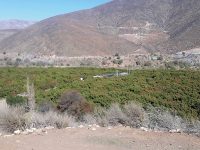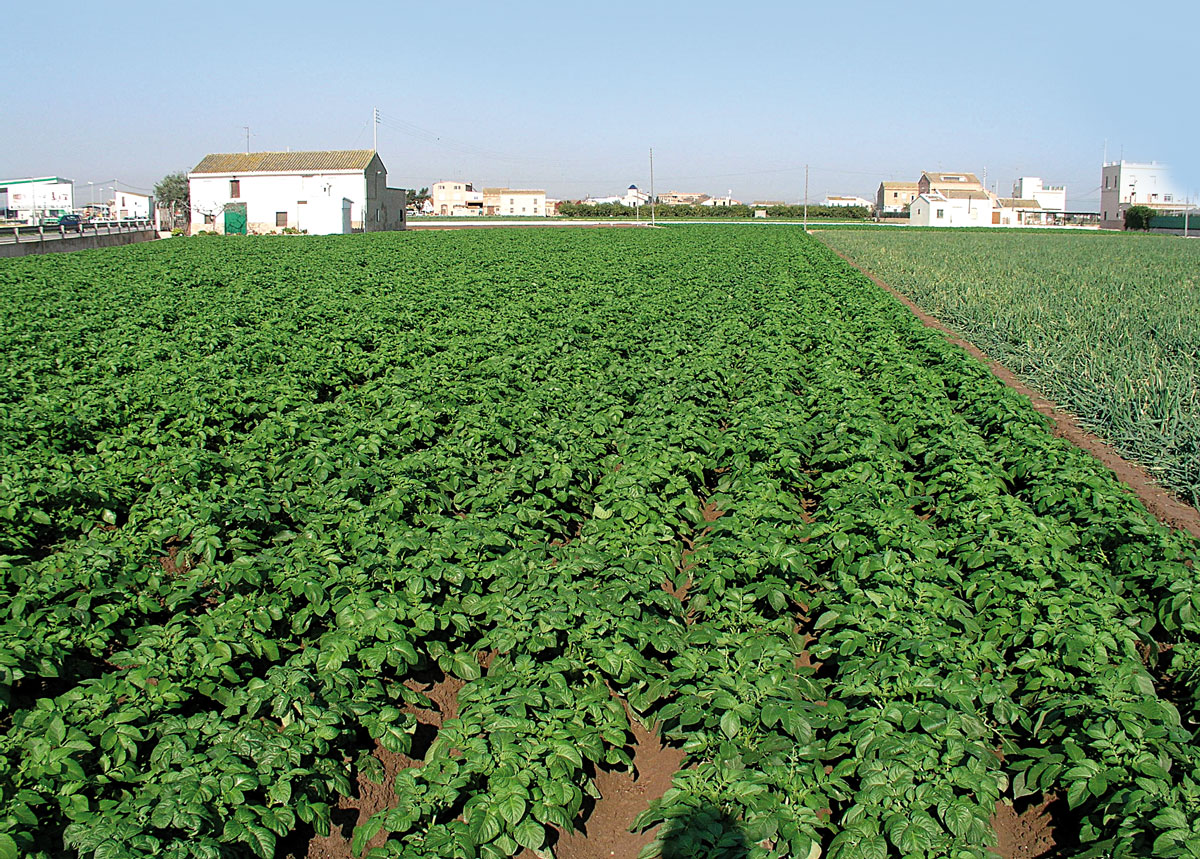
The modest potato is a tuber of great nutritional value and it should be grown in our garden at least once in a while. Although we would need a big vegetable garden (30 to 50 square metres) in order to meet the needs of a whole family, we could also dedicate a smaller surface to plant early potatoes. Our need will not be covered at all, but they are more appreciated in the kitchen. Potatoes can be cooked and fried, and are good in any way: they can either be roasted on embers for dinner, or boiled and ready to be served for breakfast. Potatoes demand little seasoning. Some people season them with butter, but others have enough with a little oil and a pinch of salt. In addition, they have several medicinal properties. It is well known their effect on oil and hot water burns: we must apply a halved boiled or fresh potato over the burned skin.
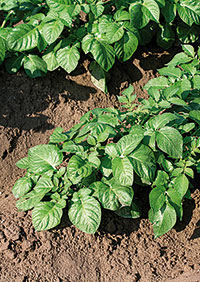
Josep Roselló
The cultivation of this plant, originally from America but cultivated in our lands for a long time, is not complicated. The potato is admirable: it is drought and moisture resistant and, either way, flourishes and prospers. It puts up with almost everything, and even if we have little skill in treating it, it is very fruitful.
But, the plant yields better if we provide what it needs; it performs better in soft and somehow humid climates. It does not want excessive heat and it is sensitive to frosts. The soil must be well worked and fertilized, better if it is loose, frank or ligh. Planting time is variable. There are several possible cycles depending on local climate. So, we have extra-early planting (in December), which is plausible if we are close to the sea, and it provides new potatoes; early planting (in early January), which is interesting but it should be done in places protected from the cold; and planting season (in early February). There is a second season of potato planting in July and August, usually with potatoes from that year’s crop. We must choose those with little size and those that seem healthy. The whole cultivation cycle must last about four months.
«The potato is admirable: it is drought and moisture resistant and, either way, flourishes and prospers»
Potatoes are sown from other tubers. If seed potatoes are large, you have to shred them. This is a practice that requires farmers to have a certain level of skill because the eyes of the tuber must be seized in order to make a sprout in each piece. The weight of the piece and the plant frame should be related. It is recommended to cut large pieces and make a broader frame, since smaller ones spring with difficulty. The day before planting, they should be cut in parts of 40-60 grams and spread to dry the wounds effectively.
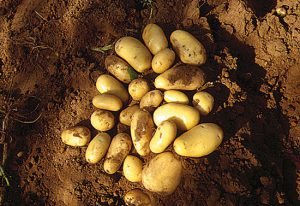
Potatoes of the «Nadine» variety. / Josep Roselló
Once the ground is prepared, furrows must be made. If our variety is early and we expect a fair production, the separation between rows must be 55-60 cm; if the variety is late and we expect a big production, the separation must be 65-70 cm. The space between plants must be between 25 and 30 cm, respectively. If we follow the moon, we will choose to plant them on a root day and while the moon is in descending period.
Once the plants have cast stems and measure a span, the land must be weeded out and enhanced in order to cover the tubers. If they are exposed to sunlight, they become green due to solanine accumulation. Solanine is a toxic alkaloid that makes them unfit for human consumption.
During cultivation, potato plants can be favourably associated with beans, cabbage, broad beans and celery, but it does not happen very often. We must be careful with the rotation period to avoid the presence of nematodes in the soil, which are difficult to remove once they have entered. We must be also careful with fungi such as Rhizoctonia and Fusarium, which are also difficult to control. It is advisable not to repeat the same cultivation in two or three years for this reason. As previous crop, it is interesting to resort to a green manure or a legume crop. After cultivating potatoes, you will find the soil in good condition but exhausted of nutrients, as potatoes are quite consuming.
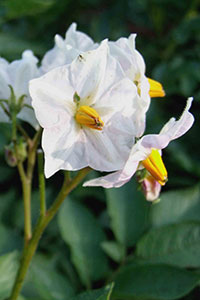
Potato flower. / Josep Roselló
Choosing a good variety to plant is very important because there are plenty of them. We must know the desired characteristics in order to choose wisely, so we can look for precocity, sanitary resistance, productivity, etc. But, the choice is usually made by widespread features such as skin color, flesh color or fitness for frying or boiling. In case of doubt, it is advisable to try several varieties and choose the one that interests us the most. We should buy potato seeds every year, and they have to come from high and cold places where there is no possibility of catching viral diseases.
Regarding health, we should keep in mind that there are several fungi that, if suitable weather conditions exist, can affect the plant. Thus, there appears the mildew, a very serious disease that can ruin the crop. We must prevent it with preparations based on copper salts. The Colorado Potato Beetle (it came from there) is also common. Both larvae and adults are very voracious and they cause major losses. Manual collection can be done in smallholdings. It is also recommended to harden the plant with nettle slurry, rock dust or algae. In terms of control products, we should highlight the neem, a plant extract which is effective against insects.
The day that harvest season starts, we will draw soil with a hoe or a spade, we will leave it to dry for a few hours for better preservation, and then we will fill the bag and take them to the kitchen. Now we can cook them to our taste and enjoy its unique land-reminiscing flavour.

The upside down tomato can be kept hanging until spring. / Josep Roselló
The best fruits
The upside down tomato
The Upside Down Tomato is a work of art and of genetic engineering done by traditional farmers. Designing a grouped ripening tomato, which does not release the fruit, loses too much water and it is preserved for a long time was a necessity in past times as there were no refrigerators. So, the best way to enjoy the precious tomatoes was making them suitable for long-term storage. And so they did: Using the genetic diversity of local varieties, they selected the most resistant ones and they gradually created this special kind of tomato. And this necessary selection is made to this day by choosing the sowing seeds that last more and have sweeter taste, so these features are maintained year after year.
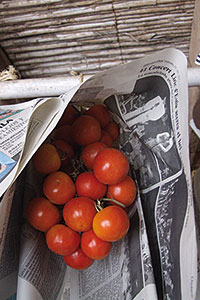
Josep Roselló
We also have to be careful with its cultivation, as it must not have excessive nitrogen and irrigation water because these factors reduce storage capacity. It is harvested when the colour begins to appear intense and, after spreading them to choose the best looking ones, we hang them together by sewing them with a thread and leave them untouched and in a quiet place. They remain like that until the following spring.
It is very common in the Mediterranean coast and the Balearic Islands, and they are also called tomate de ferradura or tomaca de l’aranyeta, as it is normal for the red spider to form webs on the fruits.
The Upside Down Tomato can be consumed raw. Its traditional way of intake is by spreading it on bread with a little oil and a pinch of salt. It is also suitable for sauces for its abundance in pulp and water, and it also improves meals if served stir-fried or roasted. It has an intense sweet flavour and low acidity.


